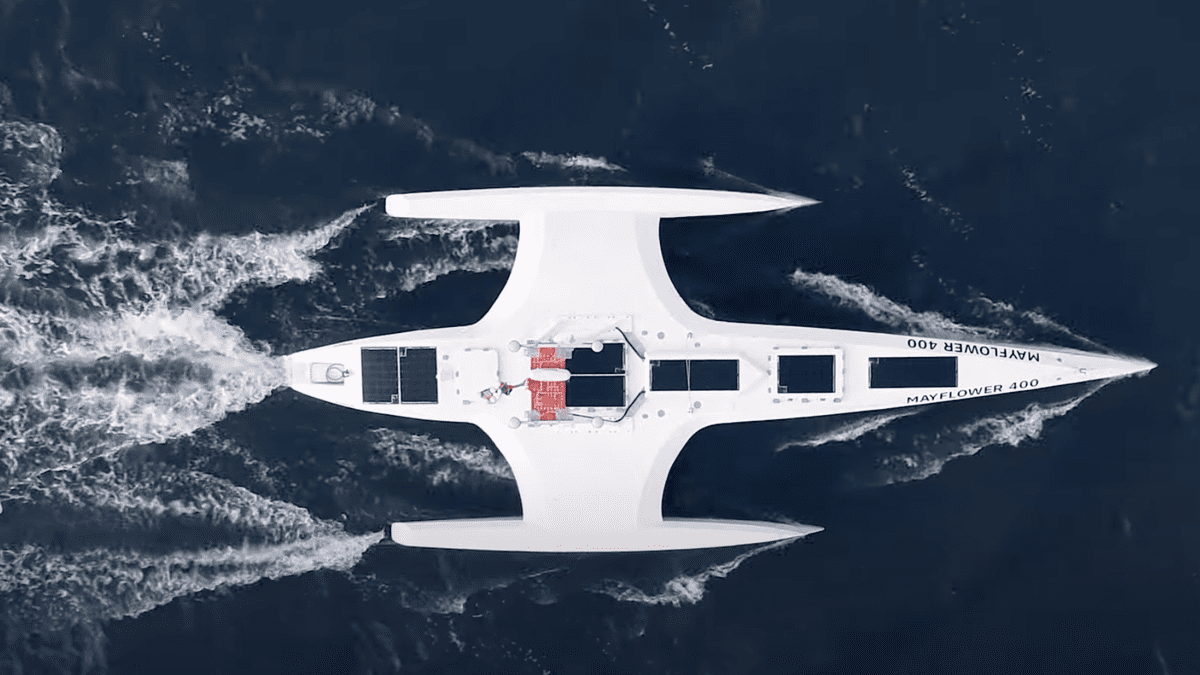Autonomous Mayflower Messes up Trip That Humans Successfully Completed Hundreds of Years Ago

If you grew up in America, there’s a good chance you spent every November revisiting the gospel of the Mayflower. Now, a group of engineers tried to recreate the 1620 sea voyage to Plymouth, Massachusetts with an autonomous version of the Mayflower — which totally failed to hit its mark and ended up in Halifax, Nova Scotia instead, the AP reports.
Halifax, NS and Plymouth, MA are separated by about 440 miles, as the crow flies, which is, to be honest, pretty dang close to where it should have ended up, all things considered. After all, it’s not like the Mayflower’s pilgrims actually had a particular destination in mind — they just kind of… ended up where the boat stopped.
The 50-foot Mayflower Autonomous Ship was piloted exclusively by artificial intelligence, without a single human being on board. It took the ship about five weeks to cross the Atlantic Ocean from its departure point in Plymouth, England.
Technically, the boat should have made contact by now, but unnamed technical glitches in June 2021 saw the AI-powered Mayflower return to England. Then, in April of this year, a few generator problems saw the ship docked in Portugal and undergoing repairs on the open sea.
Here’s a little more about the construction of the ship, from the AP:
AI software is getting better at helping self-driving machines understand their surroundings and pilot themselves, but most robots can’t heal themselves when the hardware goes awry.
Nonprofit marine research organization ProMare, which worked with IBM to build the ship, switched to a back-up navigation computer on May 30 and charted a course to Halifax — which was closer than any U.S. destination. The boat’s webcam on Sunday morning showed it being towed by a larger boat as the Halifax skyline neared — a safety requirement under international maritime rules, IBM said.
All things considered, it’s still quite a feat for a crewless autonomous ship; teething problems should be expected on such a long journey, but the fact that the self-propelled Mayflower actually made it to (North) America is worthy of celebration.
The whole goal of this project is to find new ways to reduce the cost of marine data collection, which is normally an expensive process thanks to the sheer number of humans it takes to man the ship and conduct research.
The ship will be repaired in Halifax. After that, it’ll head off to its ultimate destination in Plymouth, MA.



